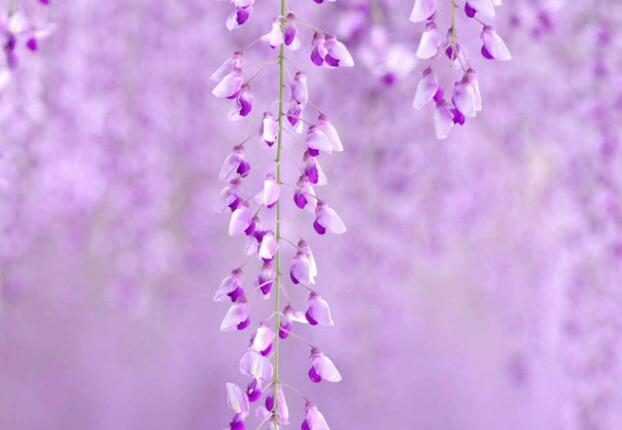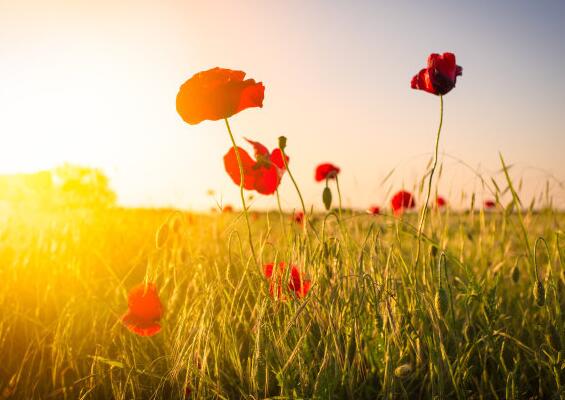
谁能给我苏州导游资格考试的七个景点的导游词,最好有英文的,嘿嘿
我是外面导游证本来要转的 但是怕麻烦后来别人说 只要在当地考外导的话就直接能转过来的就想问问 ..
英语导游词(扬州瘦西湖)
瘦西湖的英语表达是:Slender West Lake Slender West Lake is situated in the northwest suburb of YangzhouCity. It originally was a nature river course named Baozhang River.With continuous harnessing through the dynasties, it gradually became ascenic area with many enchanting lake scenes. It is located to the westof the city and is slim in its shape, so people named it Slender WestLake. 瘦西湖位于扬州城的西北郊区,原先是一个名叫宝张河的自然湖泊,经过各朝各代的不断的治理,形成了一个拥有许多美丽湖泊风光的自然景区。
由于它位于扬州城的西郊并且形态瘦长,故取名“瘦西湖”。
Dating from the Tang Dynasty (618-907AD), this manmade lake has often been quoted by several poets of the period. 从唐代开始,瘦西湖就经常被诗人们吟诵了。
Slender West Lake is 4.3 kilometers in total length with an area ofover 30 hectares. The lake boasts many famous scenic spots, such as theWhite Pagoda, the Five Pavilion Bridge, and Xiaojin Hill.The Long Dike is on the western bank of the lake, extending about one hundred meters from the entrance of the park to the Xiaojin Hill.Weeping willow trees are growing all along the dike. In the lake is anislet where Zheng Banqiao's calligraphy of couplets can be seen in a house. 瘦西湖总长4.3公里,面积30公顷。
瘦西湖因诸如白塔、五亭桥和小金山之类的景点而闻名于世。
瘦西湖的西岸有著名的长堤,从公园的入口开始绵延一百多米直到小金山,长堤边种满了垂杨柳。
湖中有个小岛,的一些书法作品就收藏在此间的一栋房子中。
广东省博物馆导游词(中英)
广东省博物馆于1957年开始筹建,1959年10月1日,广东省博物馆及其所辖的广州鲁迅纪念馆正式对外开放。
旧馆馆址在广州市文明路215号中山大学旧址(即原广东贡院旧址),占地面积4.3万㎡,除广州鲁迅纪念馆外,还辖有全国重点文物保护单位——国民党“一大”旧址(包括革命广场)和广东省文物保护单位——红楼等。
筹建之初,广东省博物馆陈列大楼设计原是“U”形的建筑物,主楼向东,右为南副楼,左为北副楼,规划建筑总面积1.4万㎡。
南副楼于1959年上半年落成,楼高三层,面积3500平方米。
主楼和北副楼后因经济困难,没有拨款建设。
改革开放后,为适应人民群众日益增长的文化需求,广东省博物馆在原址上建设了新的陈列大楼。
1992年10月新陈列大楼落成,总建筑面积18700㎡,其中新建陈列大楼12300㎡,陈列面积达6000㎡,为原楼1500㎡的4倍。
自成立以来,在党和政府的亲切关怀下,广东省博物馆通过考古发掘、调拨、购买、接受捐赠等方式征集了大量珍贵文物,并在此基础上深入开展学术研究,举办各种形式和题材的陈列展览,努力向社会提供丰富、优质的公共文化服务,在藏品收藏保管与科技保护、陈列展示、科学研究和教育推广等方面,都取得了长足的发展和丰硕的成果,并于2008年5月获评为全国首批“国家一级博物馆”。
截止2009年12月,通过考古发掘、收购、调拨、接收捐赠等方式,广东省博物馆藏品已达16.6万余(套),其中,一级文物404件,二级文物7284件,三级文物12639件,自然标本、化石4万余件(套)。
馆藏中的古字画、古陶瓷两类传世文物,无论数量还是质量,在全国博物馆中,均名列前茅,尤以“岭南画派”书画藏品丰富而闻名;端砚和潮州木雕独成系列,是极具特色的广东传统工艺收藏品;广东出土文物、广彩瓷器、石湾陶塑、广州牙雕、外销画等极富地方特色;自然标本中的“须鲸骨骼”、“巨型孔雀石”和五吨多重的“信宜玉石”等亦极其珍贵。
此外,广东省博物馆还收藏有图书资料10余万册。
十年来,广东省博物馆推出了许多产生过重大社会影响的大型展览,如《广东历史文物展览》、《广东出土文物展览》、《广东省改革开放成就展览》、《商承祚先生捐赠文物精品展览》、《刘少奇光辉业绩展览》等。
目前,馆内的基本陈列有:《广东历史大观》、《漆木精华 ——潮州木雕艺术展览》、《南海海上丝绸之路》、《广东珍稀动物展览》、《鲁迅生平与纪念》、《国民党“一大”与第一次国共合作史料陈列》等。
这些根据广东历史文化特点和馆藏优势推出的展览,反映了岭南文化悠久的历史文化积淀和丰富的自然资源。
此外,每年还不定期地推出一些各具特色的临时展览。
从开馆到现在,累计举办陈列展览300多个,从1985年至2004年近二十年间,平均每年举办8-9个陈列展览。
接待观众数百万人次。
广东省博物馆于1957年开始筹备,馆址定在文明路6号(今215号)中山大学旧址(即旧贡院)。
陈列大楼设计原是“U”形的建筑物,主楼向东,右为南副楼,左为北副楼,建筑面积约14,000平方米。
南副楼于1959年上半年落成,楼高三层,面积3500平方米。
主楼和北副楼后因经济困难,没有拨款完成。
1959年10月1日,广东省博物馆及其管理的广州鲁迅纪念馆对外开放。
改革开放以后,为适应人民群众日益增长的文化需求,广东省博物馆决定在原址上建设新的陈列大楼。
1992年10月新陈列大楼落成,总建筑面积18700平方米,其中新建大楼12300平方米,陈列面积达6000平方米,为原楼1500多平方米的4倍。
Guangdong Provincial Museum began construction in 1957, October 1, 1959, Guangdong Province Museum and under the jurisdiction of the Guangzhou Lu Xun Memorial Hall opens. The old museum is located in Guangzhou city of civilization Road No. 215 Zhongshan University ( former Guangdong site the site), covers an area of 43000 square meters, in addition to the Guangzhou Lu Xun memorial hall, also have jurisdiction over the national key cultural relics protection units -- the a site ( including the revolution Square ) and Guangdong Province paper relics protection unit -- red etc..At the beginning of the establishment, Guangdong Province museum building design is U shaped buildings, the main building to the East, south side, right, left for the north side building, planning a total construction area of 14000 square meters. The south side building in the first half of 1959 was completed, a three-storey building, area 3500 square meters. The main building and the north side building, due to economic difficulties, no funding construction.After the reform and opening up, in order to meet the growing cultural needs of the people, Guangdong Province Museum on the site of the construction of the new building displays. In 1992 October the new exhibition building was inaugurated, a total construction area of 18700 square meters, of which 12300 square meters of new building displays, display area of 6000 square meters, for the original building 1500㎡4 times.Since its inception, the party and the government under the loving care of Guangdong Province, the museum through archaeological excavation, transfer, purchase, donations and collected a large number of precious cultural relics, and on the basis of in-depth research, holding various forms and themes of the exhibition, and strive to provide rich, high-quality public cultural service in the collection, storage, display and technological protection, scientific research and education etc, have made great strides in the development and fruitful results, and in 2008 May was named the first batch of national museum .As of 2009 December, through archaeological excavation, acquisition, transfer, donations and other means, Guangdong Province Museum has reached more than 16.6 ( sets), in which, a class of 404 cultural relics of 7284 cultural relics, level two, level three of 12639 cultural relics, natural specimens, fossils of more than 4 pieces ( sets). The collection of ancient calligraphy, ancient ceramics two handed artifacts, both quantity and quality, in the National Museum, have come out in front, especially in the south of the Five Ridges school of painting and calligraphy collection rich and famous; Duan and Chaozhou wood into a single series, is very characteristics of Guangdong traditional crafts collections; Guangdong unearthed cultural relics, the color of porcelain, Shiwan Guangzhou ivory carving, pottery, exporting paintings highly local characteristics; natural specimens in whale bones , giant Malachite and five tons of multiple Xinyi jade is also the extremely precious. In addition, Guangdong Province, the museum also has a collection of books of more than 10 books.In ten years, Guangdong Province Museum launched many had great social impact of large-scale exhibition, such as the Guangdong historical relics exhibition , Guangdong unearthed cultural relics exhibition , Guangdong Province reform and opening achievement exhibition , Mr. Shang Chengzuo , donated cultural relics exhibition Liu Shaoji glorious achievements exhibition etc.. At present, the basic display: history , Guangdong grand paint wooden essence -- Chaozhou wood carving art exhibition , the South Silk Road on the sea , rare animal Guangdong exhibition, Lu Xun's life and honor , the a and the first cooperation between the KMT and the historical exhibition etc.. According to the historical and cultural characteristics of the Guangdong and its collection launched the exhibition, reflect the culture of South of the Five Ridges has a long history of cultural heritage and rich natural resources. In addition, also do not regularly introduced some distinctive temporary exhibitions. From the opening to the present, accumulative total hold exhibitions more than 300, from 1985 to 2004, nearly twenty years, the average annual 8-9 exhibition. Millions of people to receive the audience.Guangdong Provincial Museum in 1957 to begin preparations, is set in the civilized road No. 6 (now 215 ) Zhongshan University site (i.e. old Gongyuan ). Display building design is U shaped buildings, the main building to the East, south side, right, left for the north side buildings, construction area of about 14000 square meters. The south side building in the first half of 1959 was completed, a three-storey building, area 3500 square meters. The main building and the north side building, due to economic difficulties, no funding to complete. In October 1, 1959, Guangdong Provincial Museum and the management of the Lu Xun Memorial Hall in Guangzhou to open to the outside world. After the reform and opening up, in order to meet the growing cultural needs of the people, Guangdong Province museum decided on the site of the construction of new building displays. In 1992 October the new exhibition building was inaugurated, a total construction area of 18700 square meters, of which the new building of 12300 square meters, display area of 6000 square meters, for the original building more than 1500 square meters of 4 times.
求日语湖北导游词或日语导游培训机构
可去武汉外国语学院联络一下。
那里有很多日语或英语学生在读时都充当兼职导游。
如果要进行语言强化的话,那里也可是一个比较不错的语言加油站。
另外也可致电武汉旅游局咨询。
一般考前都会有为期二月的国导证强化学习班。
什么是“双关”的修辞手法
青岛,最具有代表形容就是“红瓦绿树,碧海蓝天”。
黄海之滨是非常有名的避暑胜地。
另外,青岛所特有的欧洲风情同样令人神往。
漫步在金色的沙滩上、蔚蓝的大海边和苍翠的松树下,实在令人神清气爽。
青岛自古以来就是文人贤士所留恋的地方,留下了许多名人的痕迹。
青岛的崂山被誉为“海上名山第一”,山海相依的景象曾让无数游客为之惊叹。
并且同样充满了浓郁的文化气息和神秘的传奇色彩。
城隍庙的导游词
hi尊敬的旅客 现在由我带领你们参观这历史悠久的豫园上海城隍庙坐落于上海市最为繁华的城隍庙旅游区,是上海地区重要的道教宫观,始建于明代永乐年间(1403-1424),距今已有近六百年的历史海的城隍庙始建于明代永乐年间(1403年后),庙内祭奉城隍神秦裕伯(明太祖敕封秦裕伯为上海县城城隍神)和霍光(汉大将军博陆侯)。
清代时香火极其鼎盛,上海的男女老幼,人人皆知城隍庙,上海开埠后城隍庙及其周围地区商贾云集,市场繁荣,到城隍庙可以购买许多生活必需品,特别是一些日用小商品。
上海市政府从1991年起,开始把城隍庙市场改建为具有民族传统的现代化大型旅游购物中心----豫园商城。
商城内道路较窄,建筑多建造于1911年以前(即清代末年),具有浓郁的中国古建筑的风格和特点,整个商城内小商店鳞次栉比,商品琳琅满目,各具特色,顾客熙熙攘攘,保持着中国古老的城镇街市风貌,大凡来上海的中外游客,大都要到老城隍庙走走。
在老城隍庙内,汇集了众多的上海地方小吃,绿波廊的特色点心,松月楼的素菜包,桂花厅的鸽蛋圆子,松云楼的八宝饭,还有南翔小笼和酒酿圆子,真可称得上是小吃王国了。
上海城隍庙历史悠久,是上海道教正一派主要道观之一。
老城隍庙里供奉着3个菩萨,即护城神秦裕伯、霍光、陈化成。
关于他们的传说不一,版本很多。
就说那秦裕伯,一种说法是元末明初,这位被称为“智谋之士”的上海人,为逃避乱世,辞官回到了当时还是个小县城的上海。
明朝开国后,朱元璋多次请他出山,才应允入朝。
秦裕伯是前朝老臣,又精于世道,很受皇帝重用。
朱元璋在他死后封他为上海“城隍之神”。
还有个版本是,秦裕伯是元末明初河北大名人,曾在上海住过。
传说他是一个孝子,因其母感叹未见过金銮殿,故专门建了一座像金銮殿的建筑。
后被人告密,皇帝派员来查,他就连夜将殿改成金山神庙,躲过了一场灾祸。
清军南下时,原准备屠城。
行动前夜,清军将领梦见了秦裕伯,秦警告他不准杀人,这才没敢下手。
因秦裕伯“显灵”,救了上海百姓,故被列为城隍爷。
霍光是东汉时期镇守疆土的将军。
永乐年间,上海县正式建城隍庙的时候,知县将位于城中心的霍光行祠迁此。
使上海人真正顶礼膜拜的是第三位城隍爷陈化成。
1937年抗日战争爆发后,市民从“陈公祠”中请出了1842年第二次鸦片战争中在吴淞炮台战死的江南提督陈化成的神像,供奉在大殿后进,表达了上海人民的抗战决心。
城隍在道教中的意思是指城市的保护神,可见老城隍庙在上海的地位和影响。
至于那城隍庙隔壁的豫园,据说是永乐年间一个在四川任布政使发了迹的上海人潘允瑞为愉悦老亲修造的一个花园。
乾隆年间,豫园卖给了城隍庙,改为它的“西园”,园中重建的湖心亭和九曲桥都很有雅趣。
这个熙熙攘攘了几百年的花园,如今的热闹喧嚣还是没有一丝减弱。
在豫园对面,一排餐饮店延伸了数十米,都是各式的美食店。
老字号“南翔馒头店”卖的小笼包远近闻名,中午饭时间还没到,等着吃小笼包的人就排成了队。
再向左拐是一条特色街,平排的两层木制红楼,店门上沿是一色的曲直镂雕连檐,再上面是镂雕的窗棂,顶上是翘角的飞檐。
街心还有个连廊,就像架起的第二道门。
街道很窄,3米多宽,两旁挂着悬空的“光明居饰”、“景龙轩”、“木梳大王”、“扇”、“茶”等招牌,一路望去,非常醒目。
这城隍庙老街虽然不似现代店铺空调宜人、玻璃映照,但其涂满红漆的木雕门面、种类俱全的小巧制作和青石板砖的粗纹路面,却很有一些《清明上河图》里那特有的乡土气息,让人感到亲切。



